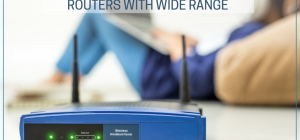 There are many different types of data centers (private vs. public). What data centers offer is a way for organizations to keep all their information, including that which is critically important to the company, in a single place. It means that any time there is a disaster or other event which damages a physical infrastructure such as power grids or internet access, it only affects one area and not all areas where the data center exists. However, a flexible mix of both public and private cloud enables easy management of the resource, but before that we need to understand the importance of colocation. So, what is colocation? A colocation data center allows a hybrid IT infrastructure to leverage the power of both cloud and on-premise infrastructure by providing high connectivity and optimal cooling.
There are many different types of data centers (private vs. public). What data centers offer is a way for organizations to keep all their information, including that which is critically important to the company, in a single place. It means that any time there is a disaster or other event which damages a physical infrastructure such as power grids or internet access, it only affects one area and not all areas where the data center exists. However, a flexible mix of both public and private cloud enables easy management of the resource, but before that we need to understand the importance of colocation. So, what is colocation? A colocation data center allows a hybrid IT infrastructure to leverage the power of both cloud and on-premise infrastructure by providing high connectivity and optimal cooling.
A hybrid colocation data center infrastructure combines a public and private data center. The company owns the public data center, but a third-party company runs and maintains it. The company may own a private data center or be rented space in a public facility. However, the latter option is less ideal because it leaves the owner no control over the physical infrastructure. The private data center should have all of the basic components of a disaster recovery plan built into it, such as redundant power, cooling, and other critical parts. In addition to these features, there should also be an off-site backup facility that can hold all of your information in case the existing facilities are damaged or destroyed. However, hybrid colocation data center infrastructure offers some benefits and disadvantages for distributed teams looking to better plan for the future. Let’s discuss them below.
The Benefits and Drawbacks of Hybrid Colocation
5 Major Benefits of Hybrid Colocation
The advantage of a hybrid colocation data center infrastructure is that it can be customized to fit the needs of an organization. For example, the company may choose to have some employees located in the public facility with another group of workers located in a private facility relying on only the public facilities for backups. They could get around this by utilizing cloud-based storage, which allows for live migration between data centers. Workers also may choose to rely on multiple data centers, which helps them achieve greater granularity and control over their backup plans.
Reduction in VPN Traffic
Less VPN traffic makes for less data transmitted and downloaded through the network, reducing costs and latency by as much as 40% under ideal conditions with a ratio of 1:1. With a ratio closer to 10:1, VPN costs can be cut in half while reducing congestion by up to 50%.
Less Power Consumption
Less traffic also means less CPU and memory usage, resulting in reduced power consumption by as much as 10% per instance.
Increased Innovation & Collaboration
A hybrid colocation data center creates a unique IT environment where every member of a company can leverage their own infrastructure and benefits as needed.
Higher ROI
The hybrid colocation data center can be used in the IT industry and in every sector to improve efficiency and operate more efficiently by lessening data traversing the network, reducing power usage, increasing the servers’ security, and reducing costs.
Decreased Data Transit Costs
Global interconnection fees between different data centers are expected to drop by as much as 30% due to increased demand for hybrid colocation infrastructure over traditional physical infrastructure, which was once considered impossible.
5 Drawbacks of Hybrid Colocation
The main disadvantage of a hybrid colocation data center infrastructure is what it requires from employees. It may be difficult for workers accustomed to being in an office building every day or for those with a disability that prevents them from traveling. In case of a disaster recovery scenario, they would likely be expected to work from a remote location.
Higher Costs of Ownership & Maintenance
A distributed network of any kind poses this same concern with respect to its ability to meet future needs and security requirements.
Proprietary IT Infrastructure Opened to Competition
The availability of data center infrastructure for any organization is a competitive advantage for other organizations. Using these facilities; their clientele is better positioned to provide superior service in a similar market.
Security of the Data Center is Limited to the Host’s Network
Certain data issues may need special tools or advanced knowledge to protect data centers from advanced threats like those found in network traffic analysis, port scans, and denial-of-service attacks.
Increased Security Vulnerability
Every network segment the data traverses is a point of vulnerability. The more segments, the more exposures.
Deprive Consumers of Their Freedom & Privacy
By allowing third-party facilities to host servers, consumers may lack privacy concerning their data. It means consumers will have little control over who can access it and for what purpose.
Hybrid Cloud Scenario: Steps for Disaster Recovery
The hybrid approach would work best when certain key employees are located elsewhere because it creates an easy way for teams to recover by following these steps:
Step 1: Get as much information from the company’s private data center as possible.
Step 2: Determine a temporary location to set up a shop to continue providing services and products. It may be inside or outside of your existing infrastructure, depending on what is required for the business for numerous reasons.
Step 3: Once the temporary location is set up, access all of your data from a backup copy located at the company’s private data center.
Step 4: Stop providing services and products to the public and move everything to a temporary location.
Step 5: Return to normal operations after time has passed, and you have been in your temporary location for several months. If you do not need to be in your temporary location, you may begin providing services and products again.
Step 6: Start a new cycle by getting more information from the public data center. This should be more of a backup copy that will allow teams to start working remotely when in need of it without having all of their information at risk again.
In addition to requiring employees to work from different locations and potentially not having their data at risk of a disaster, other disadvantages exist. The public facility is normally more expensive than private facilities, but it is paid for by the company rather than on an annual basis. This means that if the company chooses to move away from public facilities, it would have to allocate funds to pay for all of the costs associated with doing so.
Hybrid colocation data center infrastructure is an option for those working with distributed teams and disaster recovery plans. Those funds could be used to provide better benefits such as healthcare or perhaps employee shares, which would help lower overall costs in the long term. However, it has several challenges that must be addressed to have the best possible plan for these scenarios.
End Note
Hybrid colocation data center infrastructure is an improved form of the private cloud where a third-party company performs the administrative tasks, and data storage and retention are done directly on the customer’s site. It helps with disaster recovery and business continuity planning by dividing a company’s systems into two different firewalled environments: one which contains the private or public cloud infrastructure and another (the Private Cloud) which contains the critical data needed to continue operating in the event of a disaster without having to use any external vendors. Distributed teams will not have access to their critical information if they rely on this protection method because it leaves everything up to third-party companies who are not legally bound to provide your information in times of emergency.







